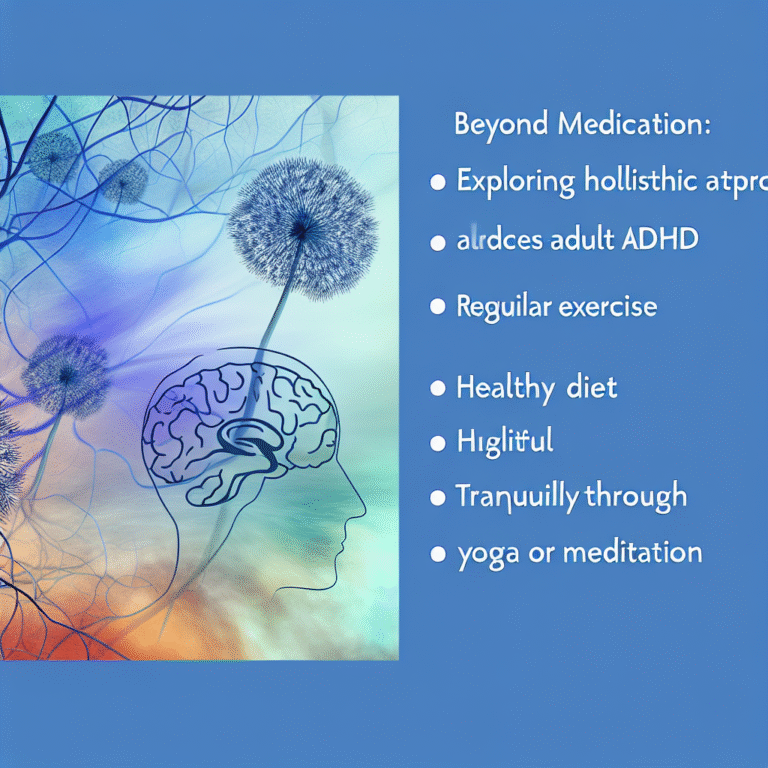
Turning Down the Volume on Anxiety: Everyday Techniques That Work
Introduction
In our fast-paced world, anxiety has become an all-too-common companion for many individuals. The constant pressure to perform, coupled with the demands of daily life, often amplifies feelings of unease and apprehension. However, what if we could learn to manage our anxiety more effectively? What if we could find ways to turn down the volume on anxiety and reclaim our peace of mind?
This article will provide you with evidence-based techniques and strategies for managing anxiety in your everyday life. From mindfulness and breathing exercises to lifestyle changes and social support, these techniques offer practical ways to help you regain control and foster a calmer mindset. Each technique is supported by real-world case studies and insights that demonstrate their effectiveness. It’s time to explore the essential methods of turning down the volume on anxiety, allowing you to lead a more balanced and fulfilling life.
Understanding Anxiety
Before we dive into the techniques, it’s crucial to understand anxiety and how it manifests in our lives. Anxiety is a natural reaction to stress, characterized by feelings of tension, worried thoughts, and physical changes like increased blood pressure. According to the World Health Organization, anxiety disorders are the most common mental health concern globally, impacting approximately 284 million people.
While occasional anxiety is normal, chronic anxiety can interfere with daily activities, relationships, and even physical health. Recognizing its varied forms and symptoms is the first step in our journey toward turning down the volume on anxiety.
Common Symptoms of Anxiety
| Physical Symptoms | Emotional Symptoms | Behavioral Symptoms |
|---|---|---|
| Increased heart rate | Excessive worrying | Avoidance behavior |
| Sweating | Restlessness | Social withdrawal |
| Fatigue | Irritability | Changes in sleep patterns |
| Difficulty concentrating | Feelings of dread | Compulsive behaviors |
Everyday Techniques for Managing Anxiety
Now that we understand anxiety, let’s explore effective techniques. Each section will include practical strategies designed to support you in turning down the volume on anxiety.
1. Mindfulness Meditation
Mindfulness meditation involves focusing on the present moment without judgment. This practice has grown in popularity as a powerful tool for anxiety management. Research shows that mindfulness can significantly reduce anxiety symptoms by teaching the mind to focus on the here and now, rather than worrying about the past or future.
Case Study: Sarah’s Journey
Sarah, a 32-year-old marketing manager, struggled with anxiety that stemmed from her job’s demands. After starting a daily mindfulness meditation practice for 10 minutes each morning, Sarah noticed profound changes. She reported feeling more grounded and less overwhelmed during stressful meetings.
This case illustrates that regular mindfulness practice can significantly contribute to turning down the volume on anxiety, providing immediate relief and long-term benefits.
How to Practice Mindfulness
- Find a Quiet Space: Sit or lie comfortably in a quiet area.
- Focus on Your Breath: Pay attention to your breath. Inhale deeply through your nose and exhale through your mouth.
- Acknowledge Thoughts: As thoughts arise, acknowledge them, then gently bring your focus back to your breath.
- Start Small: Begin with 5-10 minutes a day and gradually increase the duration.
2. Breathing Techniques
Deep breathing is one of the simplest yet most effective ways to alleviate anxiety. It activates your body’s relaxation response, helping to calm both the mind and body. The 4-7-8 breathing technique is particularly effective.
How to Practice 4-7-8 Breathing
- Inhale for 4 seconds through your nose.
- Hold your breath for 7 seconds.
- Exhale slowly through your mouth for 8 seconds.
Incorporating this technique into your routine can work wonders, especially in moments of high stress or before important events.
3. Physical Exercise
Engaging in regular physical activity is essential for mental well-being. Exercise releases endorphins, natural mood lifters that can help lower stress levels and enhance feelings of relaxation.
Case Study: Mark’s Transformation
Mark, a 45-year-old accountant, began jogging three times a week after noticing that his anxiety was affecting his job performance. Within weeks, Mark reported feeling lighter and more focused. His newfound routine not only improved his physical health but also dramatically reduced his anxiety symptoms.
This case underlines the importance of physical exercise in turning down the volume on anxiety. Aim for at least 30 minutes of moderate exercise most days of the week.
4. Social Support
Having a strong support network is crucial for mental health. Engaging in open discussions with friends or family about your feelings can help mitigate anxiety. Sharing experiences often leads to solutions and strengthens relationships.
Building Your Support Network
- Reach Out: Don’t hesitate to ask for help.
- Join Groups: Consider joining support groups or community activities.
- Communicate: Keep the lines of communication open with loved ones.
A robust support network is instrumental in turning down the volume on anxiety, as it provides a sense of comfort and belonging.
5. Healthy Lifestyle Choices
Nutrition plays a significant role in mental health. A balanced diet rich in fruits, vegetables, whole grains, and lean proteins can positively impact brain function and mood regulation.
Essential Nutrients for Reducing Anxiety
| Nutrient | Source | Benefits |
|---|---|---|
| Omega-3 Fatty Acids | Fish, walnuts | Reduces symptoms of anxiety |
| Magnesium | Leafy greens, nuts | Helps regulate mood |
| B Vitamins | Whole grains, eggs | Supports nervous system health |
| Antioxidants | Berries, dark chocolate | Reduces inflammation |
6. Limiting Caffeine and Alcohol
Both caffeine and alcohol can exacerbate anxiety symptoms. Caffeine can stimulate your central nervous system, leading to increased heart rate and jitteriness, while alcohol may seem relaxing but can lead to rebound anxiety once its effects wear off.
7. Progressive Muscle Relaxation (PMR)
PMR is a technique that involves tensing and then relaxing different muscle groups in the body, which helps relieve physical tension associated with anxiety.
Steps to Practice PMR
- Find a Comfortable Position: Sit or lie down.
- Tense: Starting from your toes, tense the muscle for 5 seconds.
- Release: Relax the muscle and focus on the sensation of relaxation.
- Move Upward: Continue this process through all muscle groups, up to your head.
PMR can be a transformative practice in turning down the volume on anxiety, providing both physical and mental relief.
Conclusion
Anxiety is a challenge that many face, but through actionable techniques and lifestyle adjustments, it’s possible to turn down the volume on anxiety. From mindfulness meditation to exercise and healthy lifestyle choices, each method is supported by real-world experiences and scientific research.
The key takeaway is that you don’t have to face anxiety alone. Incorporating these strategies into your daily routine can empower you to manage anxiety more effectively and reclaim your peace of mind. Remember, progress may take time, but with patience and persistence, you can cultivate a more serene and balanced life.
FAQs
1. How long does it take to see results from mindfulness meditation?
While some individuals notice benefits almost immediately, others may take a few weeks to see significant changes. Consistency is key, so aim for regular practice.
2. Is exercise really effective in reducing anxiety?
Yes, exercise produces endorphins and can help improve your overall mental health. Studies suggest that even moderate physical activity can significantly decrease anxiety levels.
3. Can diet impact anxiety levels?
Absolutely! A balanced diet rich in nutrients can positively affect brain health, enhancing mood and reducing anxiety symptoms.
4. How often should I practice breathing techniques?
You can practice breathing techniques daily, especially during moments of high stress, to help calm your mind and body.
5. What should I do if my anxiety becomes overwhelming?
If your anxiety becomes overwhelming, consider seeking professional help. Therapists and counselors can provide personalized strategies and support for managing anxiety effectively.
Through informed personal choices and supportive community engagement, anyone can learn to manage their anxiety effectively. Let the journey to turning down the volume on anxiety begin today!















